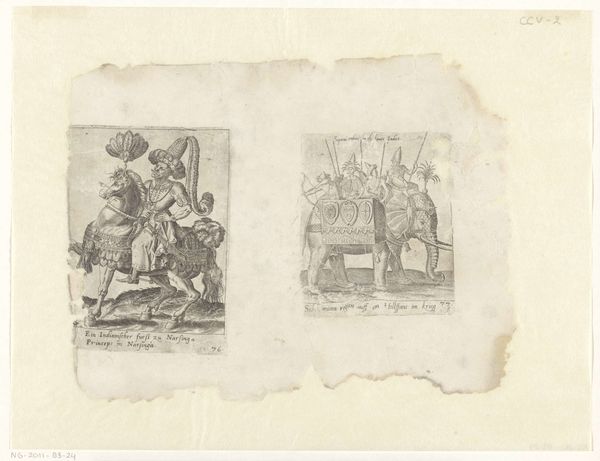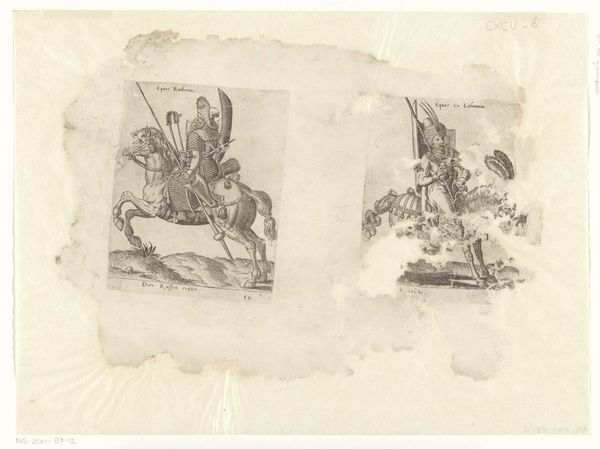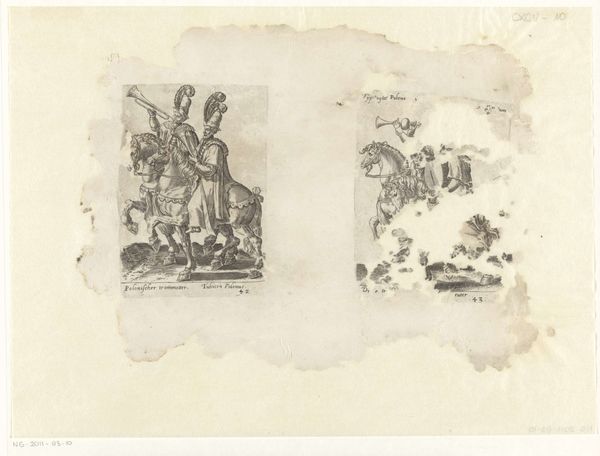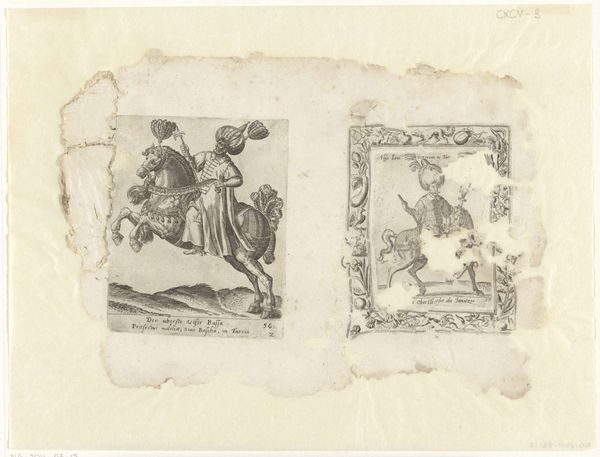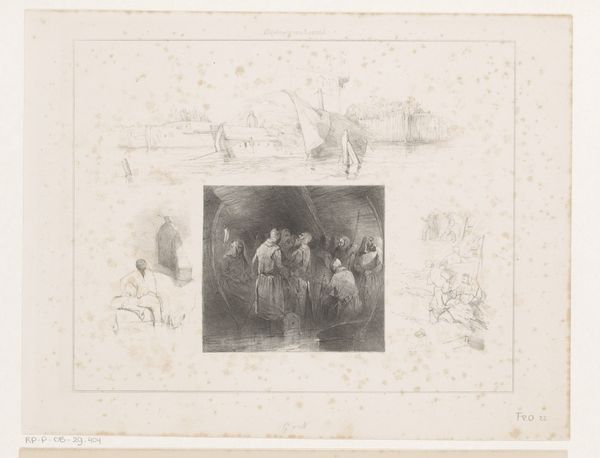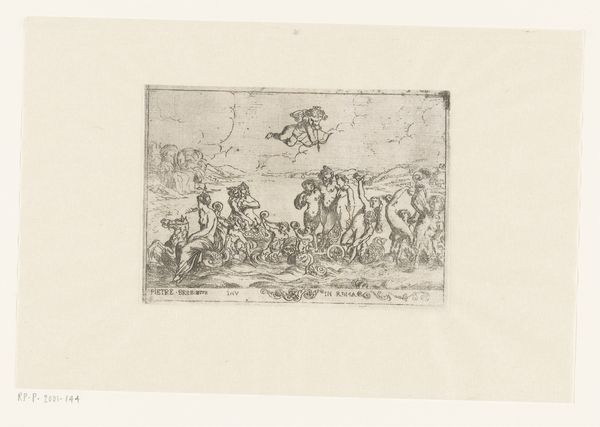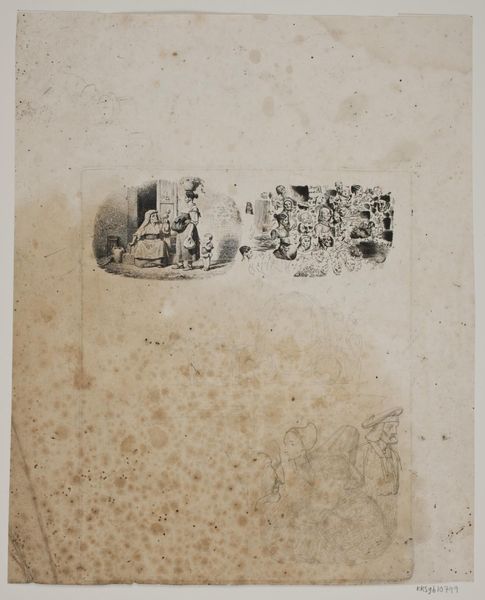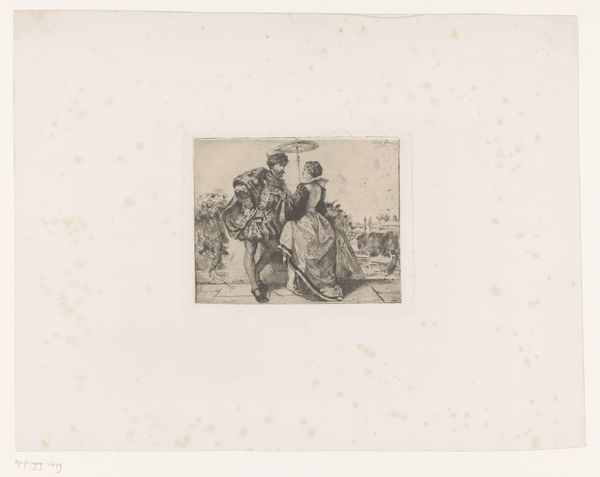
print, engraving
# print
#
pen sketch
#
mannerism
#
genre-painting
#
engraving
Dimensions: height 249 mm, width 345 mm
Copyright: Rijks Museum: Open Domain
Editor: This is an engraving called "Ottomaanse ruiter en avonturier te paard" - "Ottoman Rider and Adventurer on Horseback," created sometime between 1576 and 1596 by Abraham de Bruyn. It's a small print, but the details are fascinating. What catches my eye is how stylized and symbolic the figures appear. What do you make of it? Curator: I see echoes of cultural fascination and even, perhaps, some anxiety. The "Ottoman Rider" was a powerful symbol in the late 16th century, a time when Europe had extensive trade and, yes, conflict, with the Ottoman Empire. Notice how the artist uses particular, almost theatrical, costumes and postures? Editor: Yes! It’s like they are performing "being Ottoman," or being a knight of some kind! Curator: Precisely. Think of these prints as visual shorthands. What symbols resonate most? Is it the plumes, the weaponry, the horse's posture? Editor: Definitely the plumes! And the highly decorated saddle blanket. These feel like exaggerations… almost caricatures. Curator: In a way, they are. These prints circulated widely, creating and reinforcing a certain cultural understanding. Are they accurate representations? Perhaps not entirely. But do they reveal how Europeans saw, interpreted, and perhaps even feared or envied the "Ottoman other?" Absolutely. How do these symbols carry forward or transform over time? Editor: This makes me rethink what I'm seeing. I initially saw it as a decorative print, but now I understand it captures a complex cultural relationship. Curator: Exactly! A single image holds within it a multitude of narratives, prejudices, and even desires, offering a glimpse into a shared cultural memory.
Comments
No comments
Be the first to comment and join the conversation on the ultimate creative platform.
